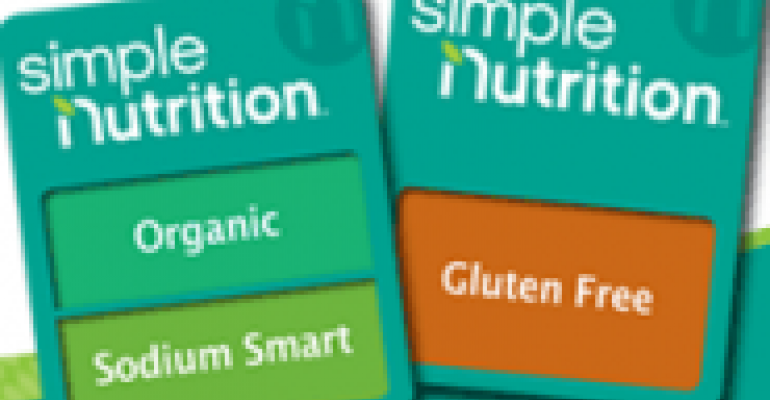One by one, supermarkets have announced their commitment to one form of nutrition labeling or another. Some have joined up with syndicated programs like Guiding Stars and NuVal, while others, like Supervalu, have developed their own systems.
 The new adoptions are a way for retailers to stay current amidst the growing health concerns in this country. But they’re also becoming a competitive tool, as Safeway made apparent this week with its new SimpleNutrition program, which will use colorful shelf tags to identify health benefits in products, such as “Gluten-Free” and “Good Source of Fiber”. There are 22 claims in all, and up to two can be featured on each tag.
The new adoptions are a way for retailers to stay current amidst the growing health concerns in this country. But they’re also becoming a competitive tool, as Safeway made apparent this week with its new SimpleNutrition program, which will use colorful shelf tags to identify health benefits in products, such as “Gluten-Free” and “Good Source of Fiber”. There are 22 claims in all, and up to two can be featured on each tag.
“Shoppers will see that the tags are simple to read without a complicated numbering system or confusing symbols,” stated the release from Safeway.
With that, Safeway seems to be targeting NuVal and Guiding Stars. Bold words, certainly, but the Pleasanton, California-based retailer has the expertise to back it up. It led the way on quality private-label organics with its “O” line. For the past couple years, Safeway has also maintained a robust online health presence, offering nutrition guides and a program called foodflex, which lets loyalty card holders analyze the nutrition content of their purchases, and learn how to make improvements.
SimpleNutrition will have an online component to it, as well, with nutrition education features and tables that highlight healthier versions of many popular products.
The theory behind SimpleNutrition and all the other labeling systems is that consumers want a simpler shopping experience. That’s certainly true, but retailers have to ask themselves some tough questions as they develop these systems. Mainly: Does it reduce the clutter or add to it? How do shoppers know they can trust the labels? And, perhaps the hardest one: How do the standards stack up against competitors?
Consumers are shopping multiple channels these days, and research has shown a disparity in standards when comparing nutrition labeling systems. In this case, confusion could be an unintended side effect, and that’s certainly not healthy.

